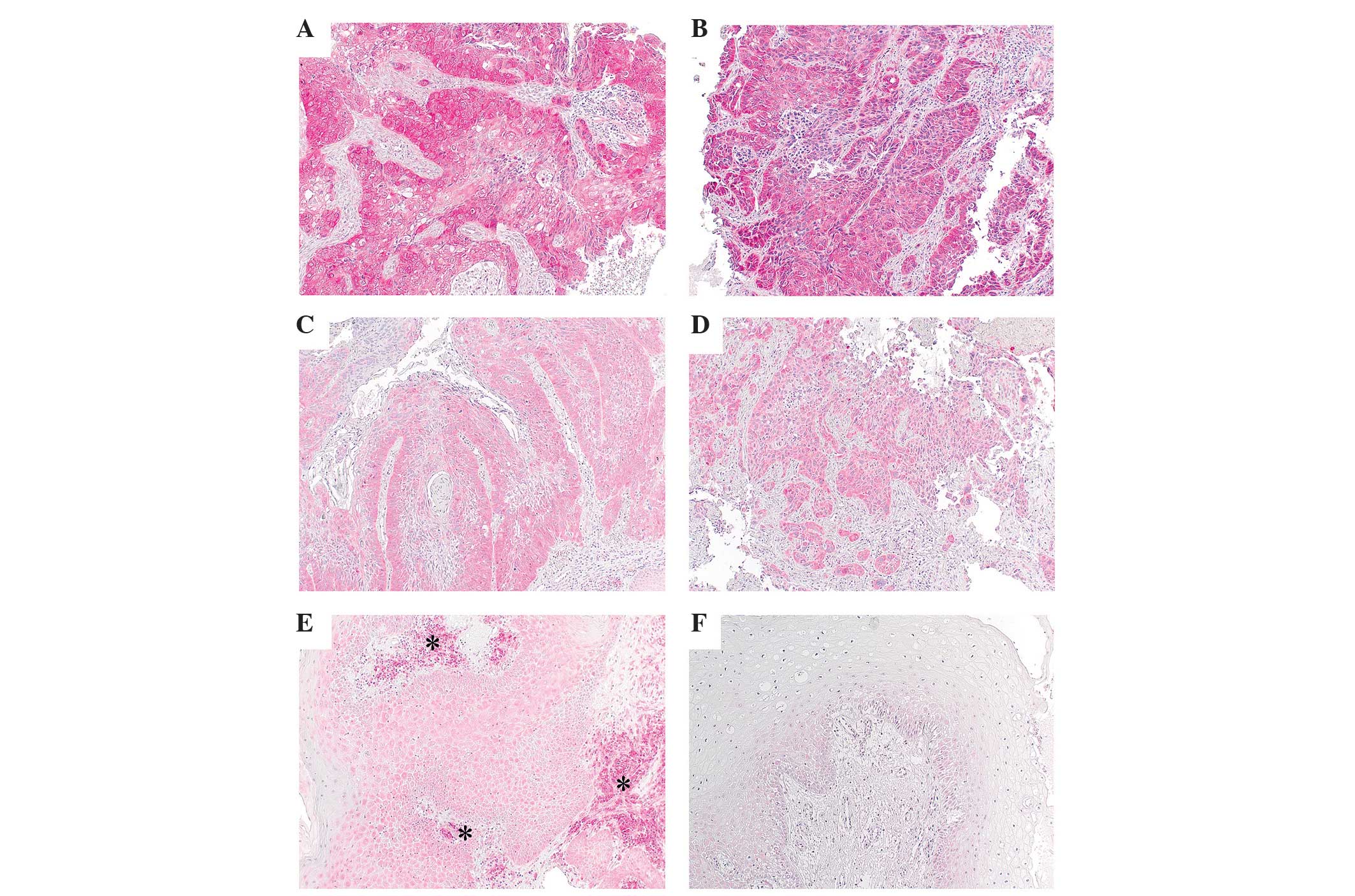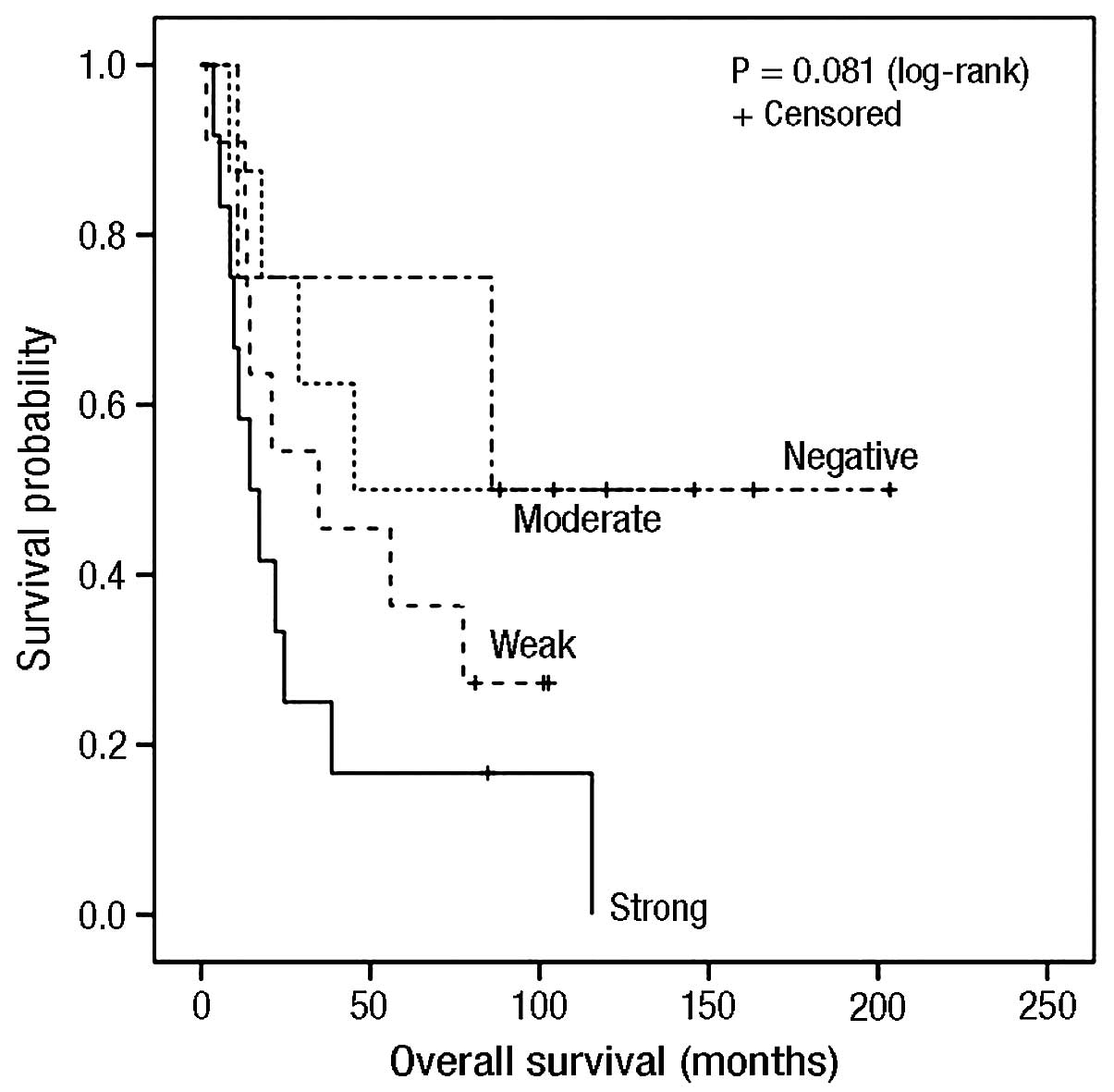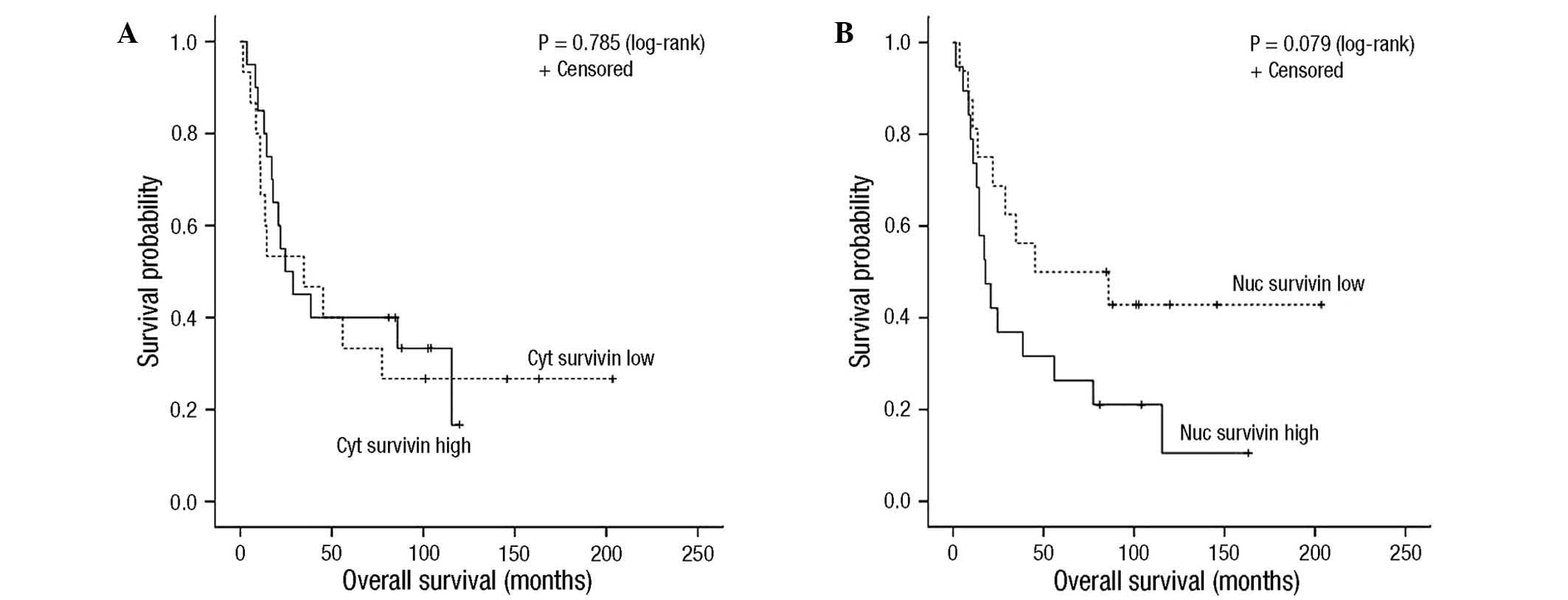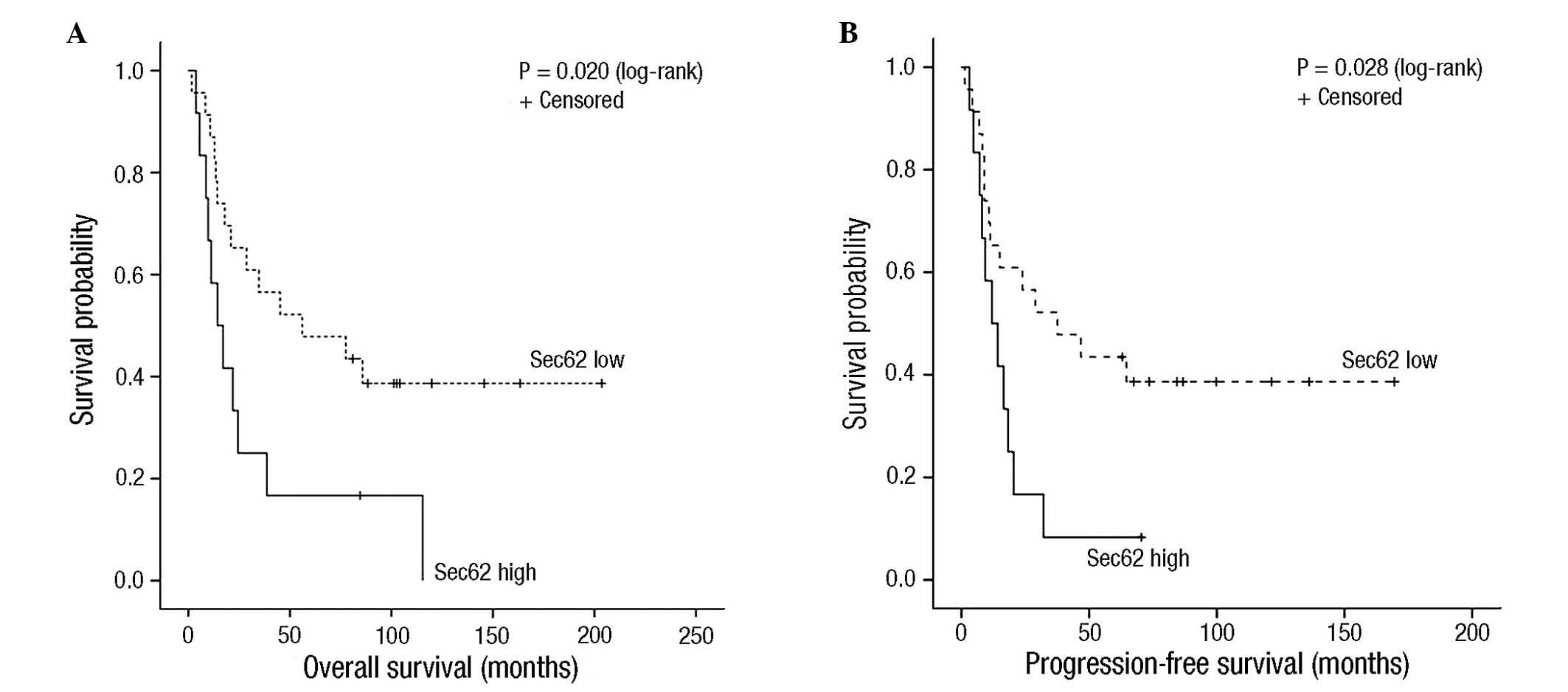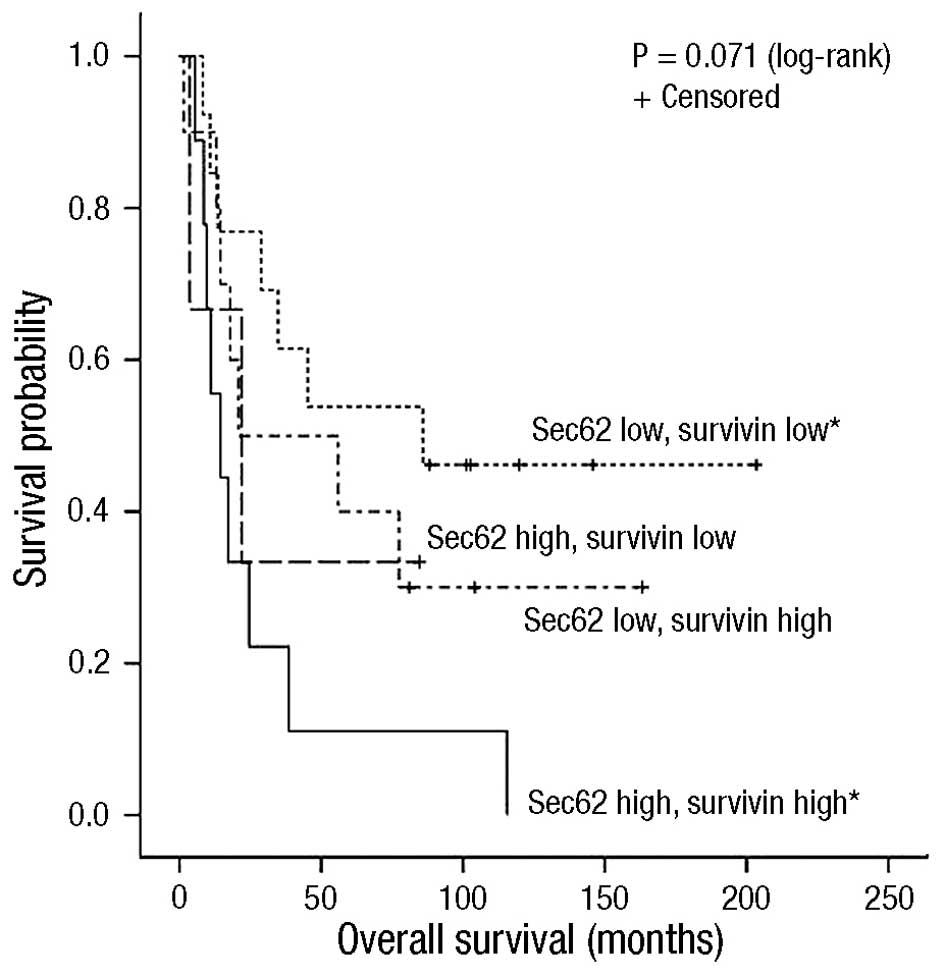|
1
|
Jemal A, Bray F, Center MM, Ferlay J, Ward
E and Forman D: Global cancer statistics. CA Cancer J Clin.
61:69–90. 2011. View Article : Google Scholar : PubMed/NCBI
|
|
2
|
Hashibe M, Brennan P, Chuang SC, Boccia S,
Castellsague X, Chen C, Curado MP, Dal Maso L, Daudt AW, Fabianova
E, et al: Interaction between tobacco and alcohol use and the risk
of head and neck cancer: Pooled analysis in the International Head
and Neck Cancer Epidemiology Consortium. Cancer Epidemiol
Biomarkers Prev. 18:541–550. 2009. View Article : Google Scholar : PubMed/NCBI
|
|
3
|
Fakhry C, Westra WH, Li S, Cmelak A, Ridge
JA, Pinto H, Forastiere A and Gillison ML: Improved survival of
patients with human papillomavirus-positive head and neck squamous
cell carcinoma in a prospective clinical trial. J Natl Cancer Inst.
100:261–269. 2008. View Article : Google Scholar : PubMed/NCBI
|
|
4
|
Ang KK, Harris J, Wheeler R, Weber R,
Rosenthal DI, Nguyen-Tân PF, Westra WH, Chung CH, Jordan RC, Lu C,
et al: Human papillomavirus and survival of patients with
oropharyngeal cancer. N Engl J Med. 363:24–35. 2010. View Article : Google Scholar : PubMed/NCBI
|
|
5
|
Chung CH and Gillison ML: Human
papillomavirus in head and neck cancer: Its role in pathogenesis
and clinical implications. Clin Cancer Res. 15:6758–6762. 2009.
View Article : Google Scholar : PubMed/NCBI
|
|
6
|
Nevins JR: The Rb/E2F pathway and cancer.
Hum Mol Genet. 10:699–703. 2001. View Article : Google Scholar : PubMed/NCBI
|
|
7
|
Burri RJ and Lee NY: Concurrent
chemotherapy and radiotherapy for head and neck cancer. Expert Rev
Anticancer Ther. 9:293–302. 2009. View Article : Google Scholar : PubMed/NCBI
|
|
8
|
Bauer VL, Braselmann H, Henke M, Mattern
D, Walch A, Unger K, Baudis M, Lassmann S, Huber R, Wienberg J, et
al: Chromosomal changes characterize head and neck cancer with poor
prognosis. J Mol Med (Berl). 86:1353–1365. 2008. View Article : Google Scholar : PubMed/NCBI
|
|
9
|
Wreesmann VB, Shi W, Thaler HT, Poluri A,
Kraus DH, Pfister D, Shaha AR, Shah JP, Rao PH and Singh B:
Identification of novel prognosticators of outcome in squamous cell
carcinoma of the head and neck. J Clin Oncol. 22:3965–3972. 2004.
View Article : Google Scholar : PubMed/NCBI
|
|
10
|
Bockmühl U, Schlüns K, Küchler I, Petersen
S and Petersen I: Genetic imbalances with impact on survival in
head and neck cancer patients. Am J Pathol. 157:369–375. 2000.
View Article : Google Scholar : PubMed/NCBI
|
|
11
|
Zhu X, Zhang F, Zhang W, He J, Zhao Y and
Chen X: Prognostic role of epidermal growth factor receptor in head
and neck cancer: A meta-analysis. J Surg Oncol. 108:387–397. 2013.
View Article : Google Scholar : PubMed/NCBI
|
|
12
|
Keren S, Shoude Z, Lu Z and Beibei Y: Role
of EGFR as a prognostic factor for survival in head and neck
cancer: A meta-analysis. Tumour Biol. 35:2285–2295. 2014.
View Article : Google Scholar : PubMed/NCBI
|
|
13
|
Li F, Yang J, Ramnath N, Javle MM and Tan
D: Nuclear or cytoplasmic expression of survivin: What is the
significance? Int J Cancer. 114:509–512. 2005. View Article : Google Scholar : PubMed/NCBI
|
|
14
|
Lo Muzio L, Pannone G, Leonardi R,
Staibano S, Mignogna MD, De Rosa G, Kudo Y, Takata T and Altieri
DC: Survivin, a potential early predictor of tumor progression in
the oral mucosa. J Dent Res. 82:923–928. 2003. View Article : Google Scholar : PubMed/NCBI
|
|
15
|
Freier K, Pungs S, Sticht C,
Flechtenmacher C, Lichter P, Joos S and Hofele C: High survivin
expression is associated with favorable outcome in advanced primary
oral squamous cell carcinoma after radiation therapy. Int J Cancer.
120:942–946. 2007. View Article : Google Scholar : PubMed/NCBI
|
|
16
|
Farnebo L, Tiefenböck K, Ansell A, Thunell
LK, Garvin S and Roberg K: Strong expression of survivin is
associated with positive response to radiotherapy and improved
overall survival in head and neck squamous cell carcinoma patients.
Int J Cancer. 133:1994–2003. 2013. View Article : Google Scholar : PubMed/NCBI
|
|
17
|
Preuss SF, Weinell A, Molitor M, Semrau R,
Stenner M, Drebber U, Wedemeyer I, Hoffmann TK, Guntinas-Lichius O
and Klussmann JP: Survivin and epidermal growth factor receptor
expression in surgically treated oropharyngeal squamous cell
carcinoma. Head Neck. 30:1318–1324. 2008. View Article : Google Scholar : PubMed/NCBI
|
|
18
|
Herbst RS: Review of epidermal growth
factor receptor biology. Int J Radiat Oncol Biol Phys. 59(Suppl 2):
S21–S26. 2004. View Article : Google Scholar
|
|
19
|
Nicholson RI, Gee JM and Harper ME: EGFR
and cancer prognosis. Eur J Cancer. 37(Suppl 4): S9–S15. 2001.
View Article : Google Scholar : PubMed/NCBI
|
|
20
|
Grandis Rubin J, Tweardy DJ and Melhem MF:
Asynchronous modulation of transforming growth factor alpha and
epidermal growth factor receptor protein expression in progression
of premalignant lesions to head and neck squamous cell carcinoma.
Clin Cancer Res. 4:13–20. 1998.PubMed/NCBI
|
|
21
|
Dassonville O, Formento JL, Francoual M,
Ramaioli A, Santini J, Schneider M, Demard F and Milano G:
Expression of epidermal growth factor receptor and survival in
upper aerodigestive tract cancer. J Clin Oncol. 11:1873–1878.
1993.PubMed/NCBI
|
|
22
|
Li F, Ambrosini G, Chu EY, Plescia J,
Tognin S, Marchisio PC and Altieri DC: Control of apoptosis and
mitotic spindle checkpoint by survivin. Nature. 396:580–584. 1998.
View Article : Google Scholar : PubMed/NCBI
|
|
23
|
Ambrosini G, Adida C and Altieri DC: A
novel anti-apoptosis gene, survivin, expressed in cancer and
lymphoma. Nat Med. 3:917–921. 1997. View Article : Google Scholar : PubMed/NCBI
|
|
24
|
Jung V, Kindich R, Kamradt J, Jung M,
Müller M, Schulz WA, Engers R, Unteregger G, Stöckle M, Zimmermann
R and Wullich B: Genomic and expression analysis of the 3q25-q26
amplification unit reveals TLOC1/SEC62 as a probable target gene in
prostate cancer. Mol Cancer Res. 4:169–176. 2006. View Article : Google Scholar : PubMed/NCBI
|
|
25
|
Dehan E, Ben-Dor A, Liao W, Lipson D,
Frimer H, Rienstein S, Simansky D, Krupsky M, Yaron P, Friedman E,
et al: Chromosomal aberrations and gene expression profiles in
non-small cell lung cancer. Lung Cancer. 56:175–184. 2007.
View Article : Google Scholar : PubMed/NCBI
|
|
26
|
Chen J, Guo L, Peiffer DA, Zhou L, Chan
OT, Bibikova M, Wickham-Garcia E, Lu SH, Zhan Q, Wang-Rodriguez J,
et al: Genomic profiling of 766 cancer-related genes in archived
esophageal normal and carcinoma tissues. Int J Cancer.
122:2249–2254. 2008. View Article : Google Scholar : PubMed/NCBI
|
|
27
|
Thomas LK, Bermejo JL, Vinokurova S,
Jensen K, Bierkens M, Steenbergen R, Bergmann M, von Knebel
Doeberitz M and Reuschenbach M: Chromosomal gains and losses in
human papillomavirus-associated neoplasia of the lower genital
tract - a systematic review and meta-analysis. Eur J Cancer.
50:85–98. 2014. View Article : Google Scholar : PubMed/NCBI
|
|
28
|
Klussmann JP, Mooren JJ, Lehnen M,
Claessen SM, Stenner M, Huebbers CU, Weissenborn SJ, Wedemeyer I,
Preuss SF, Straetmans JM, et al: Genetic signatures of HPV-related
and unrelated oropharyngeal carcinoma and their prognostic
implications. Clin Cancer Res. 15:1779–1786. 2009. View Article : Google Scholar : PubMed/NCBI
|
|
29
|
Greiner M, Kreutzer B, Lang S, Jung V,
Cavalié A, Unteregger G, Zimmermann R and Wullich B: Sec62 protein
level is crucial for the ER stress tolerance of prostate cancer.
Prostate. 71:1074–1083. 2011. View Article : Google Scholar : PubMed/NCBI
|
|
30
|
Greiner M, Kreutzer B, Jung V, Grobholz R,
Hasenfus A, Stöhr RF, Tornillo L, Dudek J, Stöckle M, Unteregger G,
et al: Silencing of the SEC62 gene inhibits migratory and invasive
potential of various tumor cells. Int J Cancer. 128:2284–2295.
2011. View Article : Google Scholar : PubMed/NCBI
|
|
31
|
Linxweiler M, Linxweiler J, Barth M,
Benedix J, Jung V, Kim YJ, Bohle RM, Zimmermann R and Greiner M:
Sec62 bridges the gap from 3q amplification to molecular cell
biology in non-small cell lung cancer. Am J Pathol. 180:473–483.
2012. View Article : Google Scholar : PubMed/NCBI
|
|
32
|
Linxweiler M, Schorr S, Schäuble N, Jung
M, Linxweiler J, Langer F, Schäfers HJ, Cavalié A, Zimmermann R and
Greiner M: Targeting cell migration and the endoplasmic reticulum
stress response with calmodulin antagonists: A clinically tested
small molecule phenocopy of SEC62 gene silencing in human tumor
cells. BMC Cancer. 13:574–588. 2013. View Article : Google Scholar : PubMed/NCBI
|
|
33
|
Sobin LH and Wittekind C: International
Union Against Cancer system (UICC). TNM Classification of Malignant
Tumours (6th). (Hoboken, New Jersey). John Wiley & Sons.
2002.
|
|
34
|
Remmele W and Stegner HE: Recommendation
for uniform definition of an immunoreactive score (IRS) for
immunohistochemical estrogen receptor detection (ER-ICA) in breast
cancer tissue. Pathologe. 8:138–140. 1987.(In German). PubMed/NCBI
|
|
35
|
Bentzen SM, Atasoy BM, Daley FM, Dische S,
Richman PI, Saunders MI, Trott KR and Wilson GD: Epidermal growth
factor receptor expression in pretreatment biopsies from head and
neck squamous cell carcinoma as a predictive factor for a benefit
from accelerated radiation therapy in a randomized controlled
trial. J Clin Oncol. 23:5560–5567. 2005. View Article : Google Scholar : PubMed/NCBI
|
|
36
|
Atkins D, Reiffen KA, Tegtmeier CL,
Winther H, Bonato MS and Störkel S: Immunohistochemical detection
of EGFR in paraffin-embedded tumor tissues: Variation in staining
intensity due to choice of fixative and storage time of tissue
sections. J Histochem Cytochem. 52:893–901. 2004. View Article : Google Scholar : PubMed/NCBI
|
|
37
|
Fischer C, Zlobec I, Stöckli E, Probst S,
Storck C, Tornillo L, Lugli A, Wolfensberger M and Terracciano L:
Is immunohistochemical epidermal growth factor receptor expression
overestimated as a prognostic factor in head-neck squamous cell
carcinoma? A retrospective analysis based on a tissue microarray of
365 carcinomas. Hum Pathol. 39:1527–1534. 2008. View Article : Google Scholar : PubMed/NCBI
|
|
38
|
Numico G, Russi EG, Colantonio I, Lantermo
RA, Silvestris N, Vitiello R, Comino A, Abrate M, Zavattero C,
Melano A and Merlano M: EGFR status and prognosis of patients with
locally advanced head and neck cancer treated with
chemoradiotherapy. Anticancer Res. 30:671–676. 2010.PubMed/NCBI
|
|
39
|
Eriksen JG, Steiniche T, Askaa J, Alsner J
and Overgaard J: The prognostic value of epidermal growth factor
receptor is related to tumor differentiation and the overall
treatment time of radiotherapy in squamous cell carcinomas of the
head and neck. Int J Radiat Oncol Biol Phys. 58:561–566. 2004.
View Article : Google Scholar : PubMed/NCBI
|
|
40
|
Aebersold DM, Froehlich SC, Jonczy M, Beer
KT, Laissue J, Greiner RH and Djonov V: Expression of transforming
growth factor-alpha, epidermal growth factor receptor and
platelet-derived growth factors A and B in oropharyngeal cancers
treated by curative radiation therapy. Radiother Oncol. 63:275–283.
2002. View Article : Google Scholar : PubMed/NCBI
|
|
41
|
Lassen P, Eriksen JG, Hamilton-Dutoit S,
Tramm T, Alsner J and Overgaard J: Effect of HPV-associated
p16INK4A expression on response to radiotherapy and survival in
squamous cell carcinoma of the head and neck. J Clin Oncol.
27:1992–1998. 2009. View Article : Google Scholar : PubMed/NCBI
|
|
42
|
Fischer CA, Zlobec I, Green E, Probst S,
Storck C, Lugli A, Tornillo L, Wolfensberger M and Terracciano LM:
Is the improved prognosis of p16 positive oropharyngeal squamous
cell carcinoma dependent of the treatment modality? Int J Cancer.
126:1256–1262. 2010.PubMed/NCBI
|
|
43
|
Deng Z, Hasegawa M, Aoki K, Matayoshi S,
Kiyuna A, Yamashita Y, Uehara T, Agena S, Maeda H, Xie M and Suzuki
M: A comprehensive evaluation of human papillomavirus positive
status and p16INK4a overexpression as a prognostic biomarker in
head and neck squamous cell carcinoma. Int J Oncol. 45:67–76.
2014.PubMed/NCBI
|
|
44
|
Hafkamp HC, Manni JJ, Haesevoets A, Voogd
AC, Schepers M, Bot FJ, Hopman AH, Ramaekers FC and Speel EJ:
Marked differences in survival rate between smokers and nonsmokers
with HPV 16-associated tonsillar carcinomas. Int J Cancer.
122:2656–2664. 2008. View Article : Google Scholar : PubMed/NCBI
|
|
45
|
Gillison ML, Zhang Q, Jordan R, Xiao W,
Westra WH, Trotti A, Spencer S, Harris J, Chung CH and Ang KK:
Tobacco smoking and increased risk of death and progression for
patients with p16-positive and p16-negative oropharyngeal cancer. J
Clin Oncol. 30:2102–2111. 2012. View Article : Google Scholar : PubMed/NCBI
|
|
46
|
Mita AC, Mita MM, Nawrocki ST and Giles
FJ: Survivin: Key regulator of mitosis and apoptosis and novel
target for cancer therapeutics. Clin Cancer Res. 14:5000–5005.
2008. View Article : Google Scholar : PubMed/NCBI
|
|
47
|
Okada E, Murai Y, Matsui K, Isizawa S,
Cheng C, Masuda M and Takano Y: Survivin expression in tumor cell
nuclei is predictive of a favorable prognosis in gastric cancer
patients. Cancer Lett. 163:109–116. 2001. View Article : Google Scholar : PubMed/NCBI
|
|
48
|
Kennedy SM, O'Driscoll L, Purcell R,
Fitz-Simons N, McDermott EW, Hill AD, O'Higgins NJ, Parkinson M,
Linehan R and Clynes M: Prognostic importance of survivin in breast
cancer. Br J Cancer. 88:1077–1083. 2003. View Article : Google Scholar : PubMed/NCBI
|
|
49
|
Qi G, Kudo Y, Ando T, Tsunematsu T,
Shimizu N, Siriwardena SB, Yoshida M, Keikhaee MR, Ogawa I and
Takata T: Nuclear Survivin expression is correlated with malignant
behaviors of head and neck cancer together with Aurora-B. Oral
Oncol. 46:263–270. 2010. View Article : Google Scholar : PubMed/NCBI
|
|
50
|
Koumenis C: ER stress, hypoxia tolerance
and tumor progression. Curr Mol Med. 6:55–69. 2006. View Article : Google Scholar : PubMed/NCBI
|
|
51
|
Bi M, Naczki C, Koritzimsky M, Fels D,
Blais J, Hu N, Harding H, Novoa I, Varia M, Raleigh J, et al: ER
stress-regulated translation increases tolerance to extreme hypoxia
and promotes tumor growth. EMBO J. 24:3470–3481. 2005. View Article : Google Scholar : PubMed/NCBI
|
|
52
|
Lang S, Benedix J, Fedeles SV, Schorr S,
Schirra C, Schäuble N, Jalal C, Greiner M, Hassdenteufel S, Tatzelt
J, et al: Different effects of Sec61α, Sec62 and Sec63 depletion on
transport of polypeptides into the endoplasmic reticulum of
mammalian cells. J Cell Sci. 125:1958–1969. 2012. View Article : Google Scholar : PubMed/NCBI
|
|
53
|
Lakkaraju AK, Thankappan R, Mary C,
Garrison JL, Taunton J and Strub K: Efficient secretion of small
proteins in mammalian cells relies on Sec62-dependent
posttranslational translocation. Mol Biol Cell. 23:2712–2722. 2012.
View Article : Google Scholar : PubMed/NCBI
|
|
54
|
Reithinger JH, Kim JE and Kim H: Sec62
protein mediates membrane insertion and orientation of moderately
hydrophobic signal anchor proteins in the endoplasmic reticulum
(ER). J Biol Chem. 288:18058–18067. 2013. View Article : Google Scholar : PubMed/NCBI
|
|
55
|
Hagerstrand D, Tong A, Schumacher SE, Ilic
N, Shen RR, Cheung HW, Vazquez F, Shrestha Y, Kim SY, Giacomelli
AO, et al: Systematic interrogation of 3q26 identifies TLOC1 and
SKIL as cancer drivers. Cancer Discov. 3:1044–1057. 2013.
View Article : Google Scholar : PubMed/NCBI
|
|
56
|
Jimbo A, Fujita E, Kouroku Y, Ohnishi J,
Inohara N, Kuida K, Sakamaki K, Yonehara S and Momoi T: ER stress
induces caspase-8 activation, stimulating cytochrome c
release and caspase-9 activation. Exp Cell Res. 283:156–166. 2003.
View Article : Google Scholar : PubMed/NCBI
|















